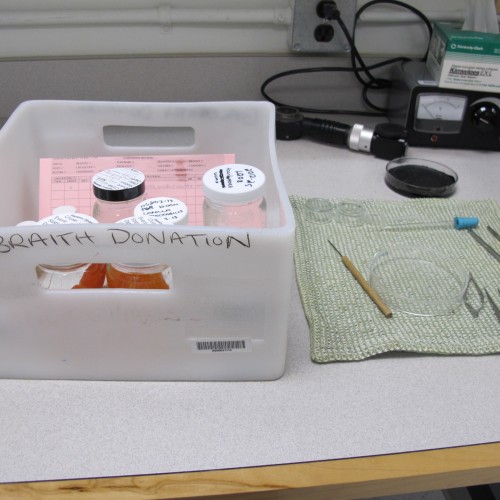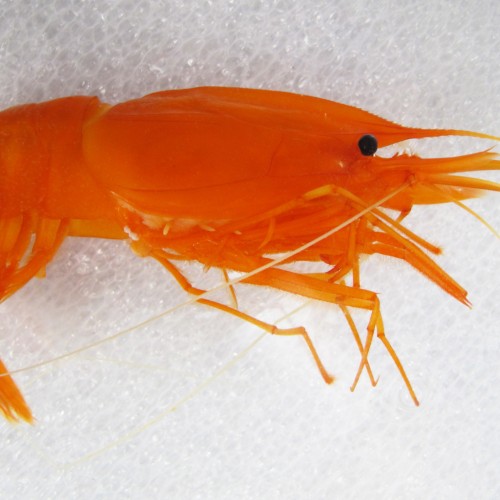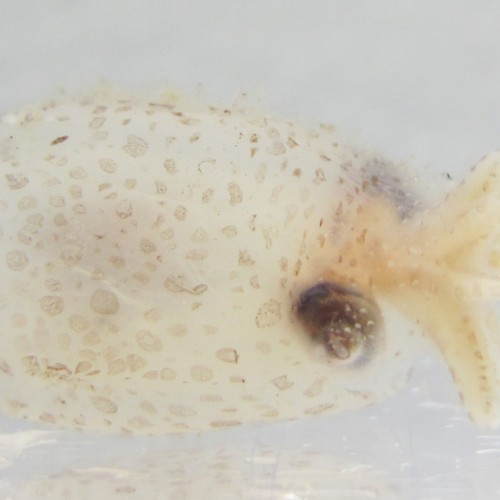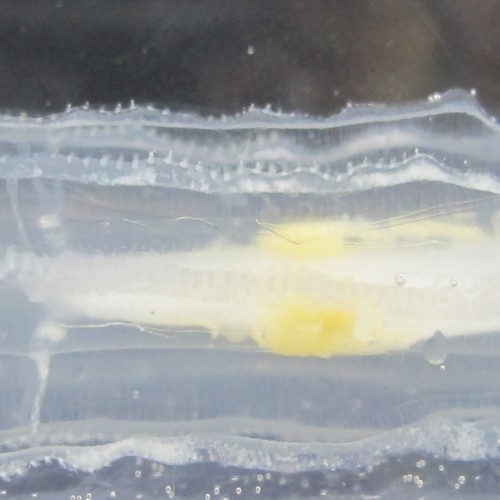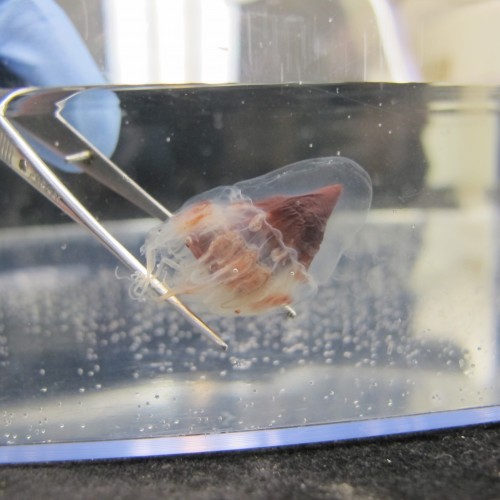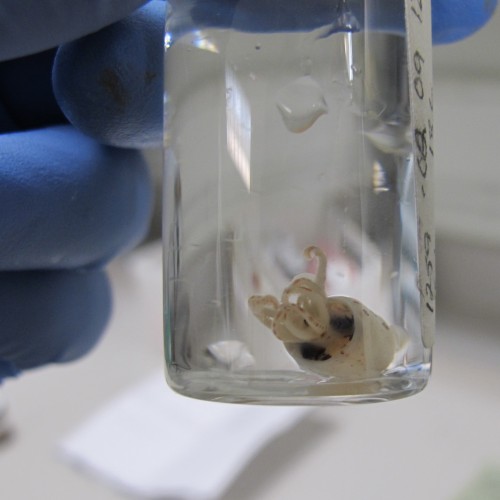What makes a quality invertebrate museum specimen?
Well, museum specimens are accessed over time by researchers to answer morphological, taxonomic, systematic, geographic, and ecological questions about BC and species that live here. The best museum specimens are those with all morphological character traits and tissue preserved to the highest quality. Usually the best specimens are those that go through a three stage process that involves relaxation, fixation, and preservation.
The quality of specimens in a recent donation by Dr. Moira Galbraith from Fisheries and Oceans Canada exemplified the benefits of the proper preservation process.
Here are some of the basics on the process:
Relaxation or Anesthetization – This is a chemical treatment to put the organism in a ‘relaxed’ state where it is no longer responds stimuli. A relaxed organism is more likely to have all its morphological characters in their natural and observable state. Think of a relaxed, feeding anemone with its tentacles extended; versus the contracted state observed at low tide when all you can see is a contracted column.
The proper relaxation treatment can vary depending on the invertebrate taxon you are working with. However, common relaxation treatments include using isotonic magnesium chloride or menthol crystals.
Fixation – This is the process that coagulates and stabilizes the protein constituents of tissue so that after death the tissues retain some of the form they had in life and do not distort or deteriorate over time. Fixation is best done as soon as possible after collection and relaxation.
Formalin at low concentrations (4-10%) and alcohol (typically ethanol or isopropanol) at high concentrations (90% +) are the most common fixatives for invertebrate specimens. If using formalin, take your tissue samples first and immerse in 95% ethanol. If using formalin for marine specimens, make sure that the solution is diluted with seawater to prevent distortion from osmotic differences. Formalin is acidic and needs to be buffered. Large specimens (squid, etc.) may need to have the fixative injected into the tissues.
Preservation – This is the final stage in the process. Preservation prevents the distortion and deterioration of specimens over time while preventing any bacterial or mould infestations. Alcohols are most commonly used as preservatives for long term storage (70% ethanol and 40-60% isopropanol). Formaldehyde is not commonly used as a preservative as initial buffering will not last over time and the solution will become acidic.
However, the highest quality specimens are nothing without data!



